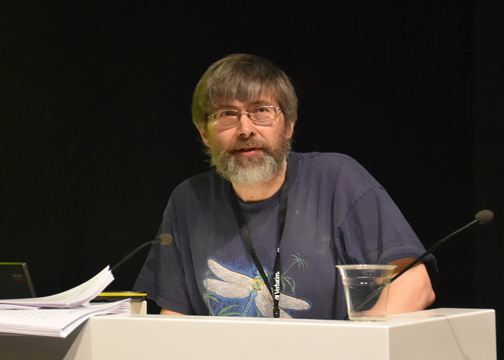Abstract
Edmund Aleksander Jarzembowski (BSc PhD FGS FRES) is currently a Leverhulme Emeritus Fellow; Scientific Associate (researcher) at The Natural History Museum London (NHMUK); and Professor at the Nanjing Institute of Geology and Palaeontology, Chinese Academy of Sciences (NIGPAS), Nanjing, specializing in the study of fossil insects (palaeoentomology).
References
- Austen, P.A. (2015) Ed Jarzembowski—2015 Jiangsu Friendship Award. Magazine of the Geologists’ Association, 14 (4), 20.
- Clifford, E., Coram, R.A., Jarzembowski, E.A. & Ross, A.J. (1994) A supplement to the insect fauna from the Purbeck Group of Dorset. Proceedings of the Dorset Natural History and Archaeological Society, 115 (for 1993), 143–146.
- Cook, E. & Ross, A.J. (1996) The stratigraphy, sedimentology and palaeontology of the Lower Weald Clay (Hauterivian) at Keymer Tileworks, West Sussex, southern England. Proceedings of the Geologists’ Association, 107 (3), 231–239. https://doi.org/10.1016/S0016-7878(96)80031-9
- Hill, C.R. (1996) A plant with flower-like organs from the Wealden of the Weald (Lower Cretaceous), southern England. Cretaceous Research, 17, 27–38. https://doi.org/10.1006/cres.1996.0003
- Jarzembowski, E.A. (2021) Fossil insects 10 years after the Geological Conservation Review (Great Britain). Palaeoentomology, 4 (4), 313–318. https://doi.org/10.11646/palaeoentomology.4.4.3
- Novokshonov, V.G., Ross, A.J., Cook, E., Krzemiński, W. & Soszyńska-Maj, A. (2016) A new family of scorpionflies (Insecta; Mecoptera) from the Lower Cretaceous of England. Cretaceous Research, 62, 44–51. https://doi.org/10.1016/j.cretres.2016.01.013
- Nye, E., Feist-Burkhardt, S., Horne, D.J., Ross, A.J. & Whittaker, J.E. (2008) The palaeoenvironment associated with a partial Iguanodon skeleton from the Upper Weald Clay (Barremian, Early Cretaceous) at Smokejacks Brickworks (Ockley, Surrey, UK), based on palynomorphs and ostracods. Cretaceous Research, 29, 417–444. https://doi.org/10.1016/j.cretres.2008.01.004
- Ross, A.J. (1997) Bibliography of fossil insects 1984–1991. Inclusion Wrostek, 25, 32 pp.
- Ross, A.J. (2014) The fauna and flora of the Insect Limestone (late Eocene), Isle of Wight, UK: Preface. Earth and Environmental Science Transactions of the Royal Society of Edinburgh, 104 (3-4), 231. https://doi.org/10.1017/S1755691014000085
- Ross, A.J. & Cook, E. (1995) The stratigraphy and palaeontology of the Upper Weald Clay (Barremian) at Smokejacks Brickworks, Ockley, Surrey, England. Cretaceous Research, 16 (6), 705–716. https://doi.org/10.1006/cres.1995.1044
- Ross, A.J. & Jarzembowski, E.A. (1993) Arthropoda (Hexapoda; Insecta). In: Benton, M. J. (Ed.), The Fossil Record 2. Chapman & Hall, London, 363–426.


